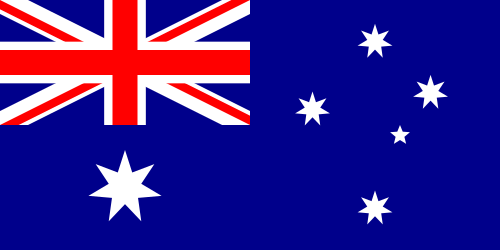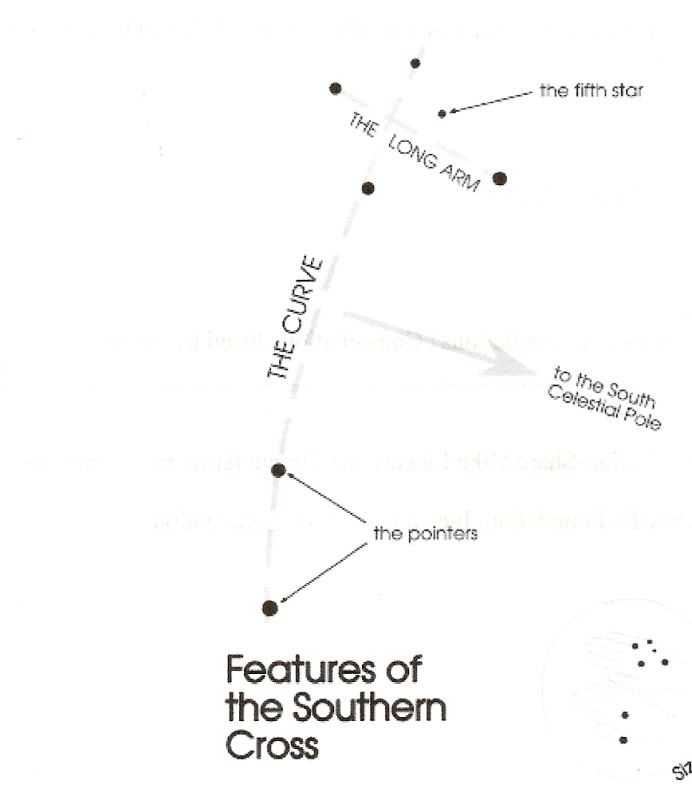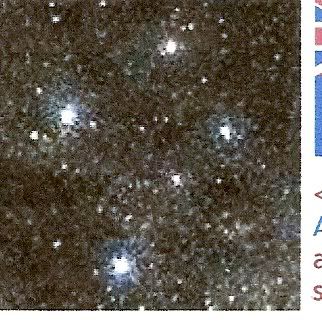Read the forum code of contact
By: - 7th June 2010 at 21:07 Permalink - Edited 1st January 1970 at 01:00
1. It looks nothing like Ursa Major aka the Great Bear. As the Great Bear was the emblem of 212 Eskadra I think some people, seeing a star pattern on a Polish Wellington, have jumped to the conclusion that it was the emblem of 212 Eskdra, despite the fact it does not look anything like it.
2. Corona Borealis is the Northern Crown, Corona Australis is the Southern Crown. Both are I think constellations in the northern hemisphere. Difficult to see any connection to Australia despite its name.
3. As it looks to me. The five stars around the chessboard are the Southern Cross. Near the Southern Cross is an arc shaped group of stars which would be to the south I think. (in Australia). Those are the ones to the left of the chessboard. The artwork my have been done from memory and so the person my not have got the positions and distances quite correct. Compare with the diagram in Wikipedia:
By: - 7th June 2010 at 22:06 Permalink - Edited 1st January 1970 at 01:00
It could, just, be a badly-drawn ursa major (over the chessboard) and ursa minor, the kind of mangled version someone might try to draw from a distant memory. There are stars missing all over the place, I know, but it could be a very rough approximation.
By: - 7th June 2010 at 22:47 Permalink - Edited 1st January 1970 at 01:00
You're sure it's not just patches over shrapnel holes?
By: - 7th June 2010 at 22:57 Permalink - Edited 1st January 1970 at 01:00
I was wondering that, as the stars seem oddly placed within the Polish symbol and bomb tallies area.
By: - 8th June 2010 at 19:13 Permalink - Edited 1st January 1970 at 01:00
I just wonder if this emblem could depict not one but two constellations : The Southern Cross as the lower one on the right and the simplified Ursa Major as the upper one on the left?
Perhaps that personal art-work could also have a special meaning for the crew, for example: a symbol of two hemispheres of Earth bound with each other?
By: - 9th June 2010 at 03:33 Permalink - Edited 1st January 1970 at 01:00
I think everyone is getting confused by the Southern Cross, it is normally depicted with 4 stars and not 5. My best its Cygnus the Swan, its in the right orientation and is normally depicted that way with 5 stars. The other group could be Ursa Major or even Ursa Minor with its tail pointing to the furthest star being the North star Polaris, but both badly drawn. All northern stars not seen in the skies over Australia or New Zealand
G.
By: - 9th June 2010 at 05:10 Permalink - Edited 1st January 1970 at 01:00
I think everyone is getting confused by the Southern Cross, it is normally depicted with 4 stars and not 5.
G.
Australian flag:
Here are what the stars are:
New Zealand flag:
By: - 9th June 2010 at 12:12 Permalink - Edited 1st January 1970 at 01:00
Yes, the Southern Cross has five stars in it as well as two very clear 'pointer' stars (not part of the actual constellation though) which are brighter than the Southern Cross and help you to find it easier. When viewing from the ground the Southern Cross is actually tipped on its side compared to the representation on our flag.
Paul
By: - 9th June 2010 at 18:27 Permalink - Edited 1st January 1970 at 01:00
Yes you are right about it having 5 stars, I was looking at some star charts on wikipedia that only showed the 4 main ones, as shown on the New Zealand flag, didnt realize that there are 5 on the Australian flag.
If it is the Southern Cross then it is very badly drawn, Epsilon Crucis and Alpha Crucis are way out of position. I thought it could have been painted better if it was painted by Australian Aircrew, hope it wasnt the Navigator. It still looks more like Cygnus also known as the Northern Cross, badly drawn aswell.
A very interseting thread, hope someone will solve it.
Regards
G.
By: - 13th June 2010 at 10:28 Permalink - Edited 1st January 1970 at 01:00
I just wonder if this emblem could depict not one but two constellations : The Southern Cross as the lower one on the right and the simplified Ursa Major as the upper one on the left?
Perhaps that personal art-work could also have a special meaning for the crew, for example: a symbol of two hemispheres of Earth bound with each other?
The photograph has appeared in a number of publications but the only author that I know of, that has called this drawing of what appears to be a constellation of stars, Ursa Major, is Cynk. He christens this Wellington ‘The Great Bear’ and in his official history of the Polish Air Force he describes it thus - “Wellington Mk IV Z1398 BH*L, with “The Great Bear,” star constellation emblem of the pre-war 212th Eskadra and 41 ops log marked on its forward fuselage; Ingham, circa June 1942.” [The Wellington is actually Z1320 BH*K]. Other authors I am not aware of may have made the same mistakes independently but I suspect they have just followed Cynk. There are no bears to be found on this Wellington and if you go looking for them you will only find red herrings.
There is another photograph of the ground crew applying the 41st bomb to the Wellington. In this photograph it can be seen that each eight-pointed star differs in size just as they are found on star maps and charts to indicate their magnitude (brightness). Evidently whoever executed or commissioned the design had some knowledge of astronomy and copied a star map.
On the right is unmistakeably the constellation called the Southern Cross. I had no problem recognising it as that straight away. The star which is positioned below and not in the centre of the two stars of the short arm is peculiar to the Southern Cross and distinguishes it from all the other ‘cross’ constellations such as Cygnus (which has nine stars in total). This star is difficult to see and in some places, such as a city, you may not be able to see it at all. I cannot see much wrong with its rendition apart from the long arm that looks too long. Nevertheless, I placed a piece of cellophane over a star chart, marked on it the positions of all the stars in the Southern Cross, then enlarged the close-up photograph of the Wellington so that the constellation was the same size. Then I laid the cellophane over the constellation on the Wellington and was not surprised to find it matched the star map exactly apart from Acrux whose correct position would be under the third bomb just below the tailfin. Perhaps this star was moved/repainted lower down for this reason. The star does look a little bit sharper in the photograph than the others
Now for the group of stars on the left. They are not Ursa Major or Minor. Not only does it not have the correct proportions, the stars’ magnitudes do not conform to any of these two constellations. In Ursa Minor the brightest star, Polaris, is at the tip of the tail. This is faint constellation and only on the coldest and clearest winter nights can a see it in its entirety from where I live. The group of starts on the Wellington has its brightest stars in the middle. For Ursa Major not only is the head far too small, the fainter star on the right would have to swap places with the one on its left as that is the position of the faintest star in that constellation. Neither of them has a triangle of stars at the end of the tail. The only constellation near to the Southern Cross that remotely resembles this group of stars is Musca but that is on the opposite side of the Southern Cross.
When one stops looking for constellations that are not there, inventing sophistries to turn it into something it does not look like and, instead use the information it conveys, treating it as an accurate representation of what it portrays, then there is little difficulty in solving this enigma.
The group of four starts at the top with a fainter star on the right are the four visible starts of the Southern Cross. The two bright stars close to it are Hadar and Rigil Kent, the two brightest stars in the constellation Centraurus. They are the so called pointer stars. Their presence verifies to an observer that they have found the Southern Cross and not one of the false crosses such as the nearby constellation Vela. The two stars and the Southern Cross lie on an imaginary arc in the sky from which the direction of the South Celestial Pole can be determined. The triangle of stars at the end is probably the constellation Triangulum Australis.
This is not the botched attempt of a bunch of Australian nincompoops but the work of someone that knows the stars and how they are used to navigate. On the right is the iconic image of the Southern Cross found on the Australian Flag and orientated as it is seen in the Australian night sky. On the left it is shown its importance to celestial navigation. Part of the pattern of stars a navigator would look for in the heavens in order to determine in which direction south was.


By: - 13th June 2010 at 17:26 Permalink - Edited 1st January 1970 at 01:00
Yes Antoni you have definately convinced me it is the Southern Cross with your explanation, I take my hat off to you.
G.
By: - 15th June 2010 at 11:44 Permalink - Edited 1st January 1970 at 01:00
Thanks a lot! It seems we have the most likely answer.


Posts: 1,099
By: VoyTech - 7th June 2010 at 13:21
A Wellington of No. 300 (Polish) Squadron was adorned with what looks like a constellation. This has been described by various authors as either the Ursa Major or the Southern Cross (the latter apparently coming from its previous service with an RAAF squadron). A friend who is keen on astronomy but not so interested in WW2 aircraft says this looks like neither of these constellations, but it might be the Corona Borealis (Southern Crown), so a connection with the Australians is still likely. Can anyone here provide more detail? The individual stars were coloured yellow in this image to make the constellation easier to distinguish from the dust and scratches on the original photo.
The same matter has been discussed here:
http://www.rafcommands.com/forum/showthread.php?t=8498